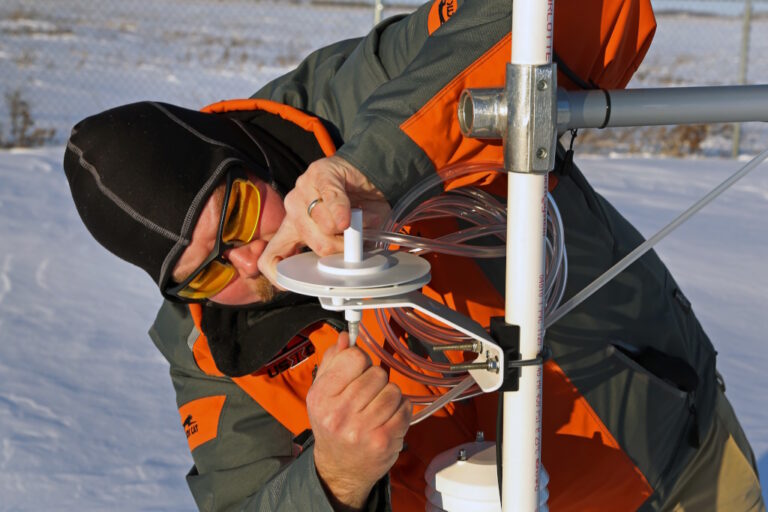UND research jet on NASA mission in Canada
Anyone who’s grown up on the northern plains will tell you straight—winters up here are long, dark, and cold. And usually snowy. But not this year.
The 2011-2012 snow season has so far been a lot warmer than expected with a lot less snow. This year’s dramatic change from “normal” underscores how tough it is to predict the weather. That’s why the National Aeronautics and Space Administration (NASA) regularly enlists the help of University of North Dakota atmospheric scientist and their fully rigged Cessna Citation II research jet.
“Our research jet is currently participating in the NASA-sponsored Global Precipitation Measurement (GPM) Cold-season Precipitation Experiment (GCPEx),” said Mike Poellot, Chester Fritz Distinguished Professor and chair of the UND Department of Atmospheric Sciences and principal investigator for the jet. GPM is an international satellite mission that will unify and set new standards for precipitation measurements from space, providing the next-generation observations of rain and snow worldwide every three hours.
The Citation and its UND team are part of the GCPEx field campaign based at the Muskoka, Ontario, airport (CYQA)
(http://www.metcam.navcanada.ca/hb/player.jsp?lang=e&site=CYQA) through March 1.
UND’s Citation II crew members on this mission are: Wayne Schindler, pilot in command (Schindler, a Thief River Falls, Minn., native and former airline and weather modification pilot, also is a certified aircraft mechanic); Jonathan Sepulveda, second in command; Roger Tilbury, reserve pilot and ground support; and graduate student Andrea Neumann, instrument operator and data technician.
Poellot, Tony Grainger, and Dave Delene—all atmospheric sciences faculty members–are rotating through the project in the capacity of flight scientist.
“The Citation is being used to collect direct observations of clouds and snow as other observations are made remotely from the NASA DC-8 flying above clouds and from instruments on the ground,” Poellot said. Additional information about the experiment may be found at http://www.nasa.gov/topics/earth/features/know-snow.html.
The Citation has been part of several NASA rain and snow tracking experiments in program leading up to the 2014 launch of the GPM satellites.
“Before NASA launches those satellites, they want to test how the instruments work,” said Poellot. “On this mission, like others before it, we’re validating what the instruments that will later be installed on the GPM satellite netowrk are measuring. If you’re using space-based instruments to detect clouds and precipitation, you have to validate what they’re seeing with what’s actually in the clouds.”
That means UND’s jet and its team of scientists will spend several hours daily during the current mission, flying into what most pilots try to avoid, Poellot noted. Then, all the data gathered aloft will be downloaded and analyzed on the ground–also by a members of the UND team.
Poellot, who has been a UND since 1976, is currently professor and chair of the John D. Odegard School’s Department of Atmospheric Sciences. He’s been flying on atmospheric research missions since his days as a graduate student, and has been directly involved in UND’s airborne research program since in began in the mid 1970s.
About the UND Cessna Citation II research jet
UND owns and operates a Cessna Citation II aircraft for the purpose of atmospheric research. This aircraft type has a number of design and performance characteristics that make it an ideal platform for a wide range of atmospheric studies. The Citation II is a twin-engine fanjet with an operating ceiling of 43,000 feet (13.1 km). The turbofan engines provide sufficient power to cruise at speeds of up to 340 knots (175 m s-1) or climb at 3,300 feet per minute (16.8 m s- 1).
These high performance capabilities are accompanied by relatively low fuel consumption at all altitudes, giving the Citation an on-station time of three to five hours, depending on mission type. Long wings allow it to be operated out of relatively short airstrips and to be flown at the slower speeds (140 kts/72 m s-1) necessary for many types of measurements. The Citation is certified for flight into known icing conditions. The plane has been extensively modified to carry several atmospheric research instruments, including externally mounted probes on the nose and probe clusters on the wing tips.
